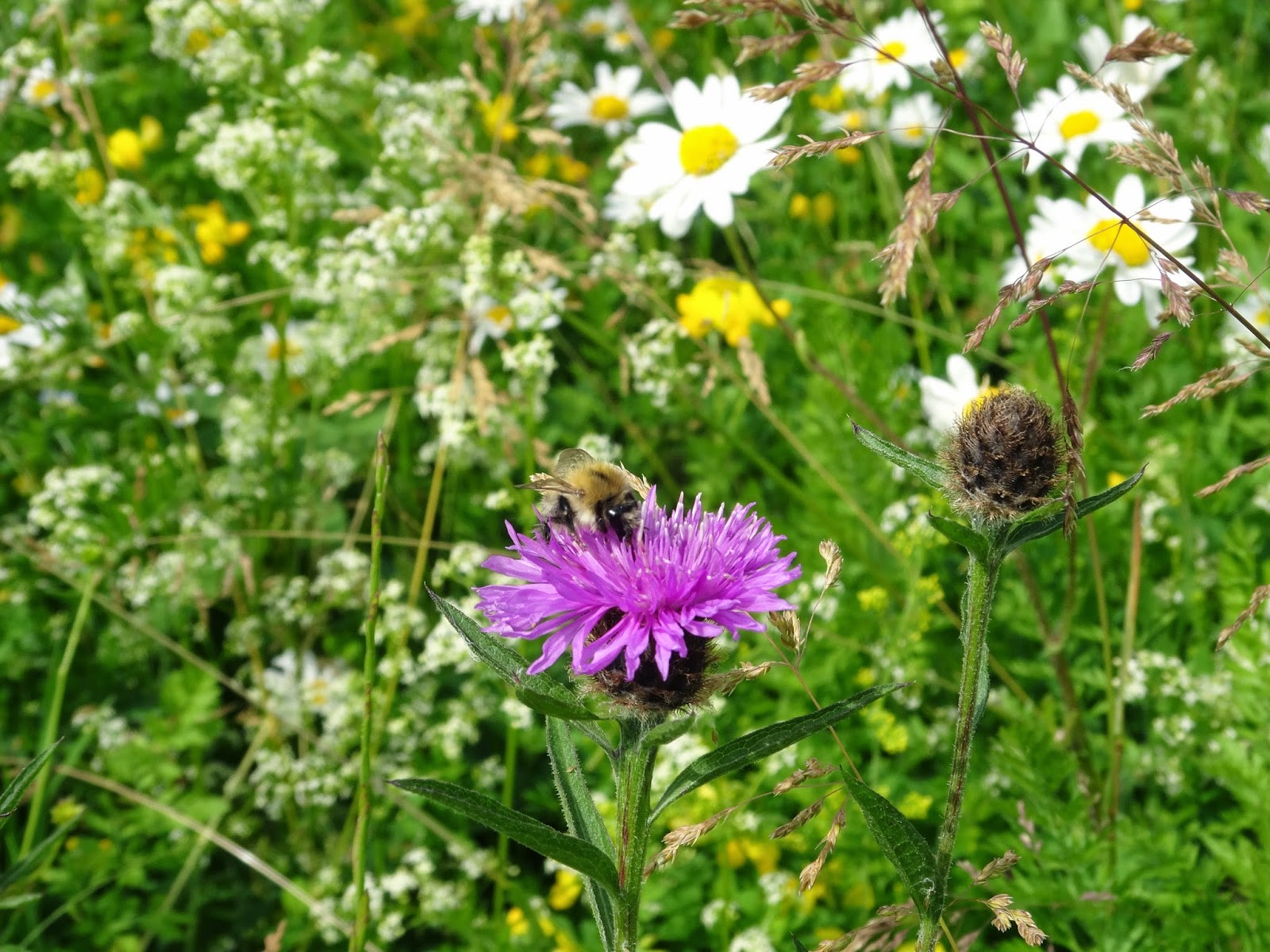After three years the Urban Pollinators Project finally came to a close in October 2014. Since its inception almost 40 researchers and staff members in four cities across the UK have been involved in designing and implementing this huge project. Publications and other outputs from the project will be published in the coming months so watch this space for further information!
From start to finish the project has employed four principal investigators, a project manager/postdoctoral researcher, a GIS expert, five research technicians and 28 field assistants. Staff have spent three wonderful summers walking hundreds of transects in Bristol, Reading, Leeds and Edinburgh, collecting thousands of plant and pollinator records in order to answer their three main research questions.
 |
| Edinburgh Team 2011 |
 |
| Bristol Team 2011 |
 |
| Reading Team 2011 |
 |
| Leeds Team 2011 |
 |
| The BBC interviews Principal Investigator Jane Memmott about the project in 2011 |
 |
| Project 'get together' 2011 |
 |
| Project team and practitioner partners 2011 |
 |
| Kath Baldock has managed the project from the beginning |
 |
| Damien, Lynne, Nadine and Mark the project research technicians from the four cities |
 |
| Helen took over from Lynne at the end of the 2013 field season |
 |
| Edinburgh Team 2012 |
 |
| Reading Team 2012 |
.jpg) |
| Bristol Team 2012 |
 |
| Leeds Team 2012 |
 |
| Laura and Ryan from the Bristol team 2013 |
 |
| Reading team 2013 |
 |
| Bristol team 2013 |
 |
| Edinburgh team 2013 sporting their new Urban Pollinators Project T-shirts |
So now that the project has finished, what has happened to everyone who has contributed over the last three years? Here's a little insight into some of the amazing things that our project staff have gone on to do after their time here.
Project Manager
Kath has recently been awarded a three year NERC Knowledge Exchange fellowship at the University of Bristol which she started in November 2014. She will be working on knowledge exchange activities related to the research carried out during the Urban Pollinators Project.
Mark is a Research Associate on the SUCCESS project
(Sustainable Urban Carbon Capture:
Engineering Soils for Climate Change) at Newcastle University. His role involves designing and implementing field experiments to investigate the botanical and invertebrate ecology of urban land designed to have a carbon capture function.
Nadine Mitschunas
Nadine is working as a Field Ecologist at the Centre for Ecology & Hydrology in Wallingford. Her role includes plant surveying, data entry and processing samples in the lab.
Damien Hicks
Damien continues to work at the University of Edinburgh. He is currently researching meadow scale floral resources and DNA barcoding of pollinators.
Lynne Osgathorpe
Lynne is currently working as the RSPB’s lead on ecosystem services. As Ecosystem Services Officer she is helping to turn the science and policy surrounding this complex subject area into delivery on the ground through the RSPB’s and their partners conservation work across the UK and abroad. Although now in an office job, Lynne is still a lover of pollinators and is frequently found chasing bumblebees around the gardens at the RSPB’s HQ, much to her colleagues amusement.
Helen Morse
Nadine is working as a Field Ecologist at the Centre for Ecology & Hydrology in Wallingford. Her role includes plant surveying, data entry and processing samples in the lab.
Damien Hicks
Damien continues to work at the University of Edinburgh. He is currently researching meadow scale floral resources and DNA barcoding of pollinators.
Lynne Osgathorpe
Lynne is currently working as the RSPB’s lead on ecosystem services. As Ecosystem Services Officer she is helping to turn the science and policy surrounding this complex subject area into delivery on the ground through the RSPB’s and their partners conservation work across the UK and abroad. Although now in an office job, Lynne is still a lover of pollinators and is frequently found chasing bumblebees around the gardens at the RSPB’s HQ, much to her colleagues amusement.
Helen Morse
Field Assistants
BRISTOL
Olivia Norfolk, 2011 PhD student, University of Nottingham
Ben Jarrett, 2012 PhD student, University of Cambridge
Clare Grey, 2012 PhD student, Queen Mary’s, London
Laura Riggi, 2013 PhD student, Uppsala University, Sweden
Ryan Harris, 2013 Assistant Ecologist, Abbas Ecology, Dorset
Phil Cannard, 2013 University of the West of England
Peter Harris 2011,12,13 Based near Oxford, researching age related diseases in nematode worms
Mark Otieno, 2011 Postdoctoral Research Associate, Penn State University, USA
Sam Cartwright, 2012 Knowledge Exchange Fellow at the University of Reading
Ellen Moss, 2013 PhD student, University of Hull
Richard Comont, 2013 Data Monitoring Officer at the Bumblebee Conservation
Trust
Kirsty Robertson, 2011,12,13 Places for people, Leeds
Joe Hicks, 2011 PhD student, University of Leeds
Mel Stone, 2012 Field Assistant, Game and wildlife conservation trust
Victoria Williams, 2013 Primary school teacher
Liz Elliot, 2013 Education Officer, National Trust, Newcastle
EDINBURGH
Sally Donaldson, 2011 Senior Ecologist at APEM, Penicuik
Juan Carlos Ruiz Guajardo, 2011 Postdoctoral Researcher, UC Davies, USA
Tom Godfrey 2011, PhD student, University of Edinburgh
Desponia Roumpeka, 2012 MSc Biochemistry, University of Edinburgh
Kasia Mikolajczak, 2012 PhD student, University of Oxford
Maria Osterbauer, 2012 MSc student, Austria
Pierre Ouvard, 2012,13 PhD student, University of Louvain-la-Neuve, Belgium
Frazer Sinclair, 2012, 13 Postdoc, RSPB, Sierra Leone
Manon Majani, 2013 BSc student, University of Edinburgh
Vasanthakrishnan Radhakrishnan, 2013 Postdoctoral Researcher, France
Morgane Saynac, 2013 BSc student, France
Sally Donaldson, 2011 Senior Ecologist at APEM, Penicuik
Juan Carlos Ruiz Guajardo, 2011 Postdoctoral Researcher, UC Davies, USA
Tom Godfrey 2011, PhD student, University of Edinburgh
Desponia Roumpeka, 2012 MSc Biochemistry, University of Edinburgh
Kasia Mikolajczak, 2012 PhD student, University of Oxford
Maria Osterbauer, 2012 MSc student, Austria
Pierre Ouvard, 2012,13 PhD student, University of Louvain-la-Neuve, Belgium
Frazer Sinclair, 2012, 13 Postdoc, RSPB, Sierra Leone
Manon Majani, 2013 BSc student, University of Edinburgh
Vasanthakrishnan Radhakrishnan, 2013 Postdoctoral Researcher, France
Morgane Saynac, 2013 BSc student, France


































































